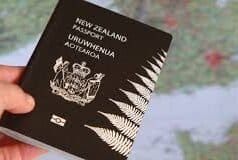Galle Fort, located in the southern region of Sri Lanka, is a historic monument that stands as a testament to the rich cultural heritage of the country. Spanning over centuries, Galle Fort has witnessed the rise and fall of empires, colonial conquests, and the evolution of a vibrant trading hub. In this blog post, we will take a deep dive into the history of Galle Fort, exploring its origins, the various influences it has encountered, and the significance it holds in the present day.
Nestled on the southwestern coast of Sri Lanka, Galle Dutch Fort stands as a monumental testament to the island’s rich history. This UNESCO World Heritage site, with its imposing walls and ancient structures, narrates stories of colonial conquests, architectural marvels, and cultural amalgamation. Galle itself is a fascinating city with many historical sites and stunning beaches. So don’t forget to explore Galle city.
What are the Origins of Galle Fort?
The Galle Fort, located in Galle, Sri Lanka, has a fascinating history that dates back several centuries. The origins of the fort can be traced back to the 16th century when the Portuguese arrived in Sri Lanka.
In 1505, the Portuguese first set foot on the island and established a trading post in Galle. However, it was not until 1588 that they began constructing a fortification to protect their interests in the region. The fort was initially built with simple earthworks and palisades.
In 1640, the Dutch, who had been eyeing the strategic location of Galle, successfully captured the fort from the Portuguese. They immediately recognized the importance of Galle as a hub for trade and defense and embarked on a massive project to fortify the area even further.
Under Dutch rule, the fort underwent significant expansion and transformation. They constructed massive walls made of coral and granite, bastions, ramparts, and gates. The fortification was designed in a star-shaped layout, which was a common architectural style during that period. This layout allowed for better defense against potential attacks.
The Dutch held control over Galle until 1796 when the British East India Company took over the region during the Napoleonic Wars. Despite the change in colonial powers, the fort continued to play a crucial role as a trading center and a military stronghold.
Over the years, the fort has faced various challenges, including natural disasters and the impacts of war. However, it has managed to survive and has been recognized as a UNESCO World Heritage Site since 1988.
Today, the Galle Fort stands as a remarkable testament to the rich history of the region. It is a major tourist attraction, known for its well-preserved colonial architecture, narrow streets, charming boutiques, cafes, and art galleries. The fort also offers stunning views of the Indian Ocean, making it a must-visit destination for travelers in Sri Lanka.
Historical Background of Galle Fort
The Origins and Construction: Galle Fort’s history can be traced back to the 16th century, initially built by the Portuguese and extensively fortified by the Dutch in the 17th century. This historical progression has left an indelible mark on the fort’s architecture and layout.
Colonial Influences: Each colonial era—the Portuguese, Dutch, and British—contributed uniquely to the fort’s development. The Dutch era, in particular, is notable for significant architectural and urban planning contributions, creating a blend of European designs with South Asian traditions.
Architecture and Design of Galle Fort
Exploring Galle City is a marvel of urban planning and architectural design. Its massive stone walls, bastions, and ramparts encircle an area replete with historic churches, mosques, colonial houses, and administrative buildings. The blend of European architectural styles with local materials and craftsmanship stands as a testament to the fort’s multicultural heritage.
Cultural Significance
Galle Fort is not just a historical monument but a living embodiment of Sri Lankan culture. It’s a venue for vibrant festivals and cultural events that celebrate the island’s diverse heritage. The fort’s narrow streets and timeless buildings have also been a muse for local artists and writers, contributing significantly to Sri Lankan literature and arts.
Top 5 Things to Do In Galle Fort
Galle Fort is a stunning UNESCO World Heritage site located in the city of Galle, Sri Lanka. With its rich history, beautiful architecture, and vibrant atmosphere, there are plenty of things to do and explore in Galle city. Here are the top five things to do:
1. Visit the Galle Lighthouse:
Located at the southernmost point of the fort, the Galle Lighthouse offers breathtaking views of the Indian Ocean and the fort itself. Climb to the top for panoramic views of the fort and its surroundings.
2. Explore the Galle Fort Museum:
Housed in a Dutch colonial building, the Galle Fort Museum showcases the history and culture of the fort and its inhabitants. It features artifacts, photographs, and exhibits that provide insight into the fort’s past.
3. Walk along the Ramparts:
Take a stroll along the fort’s ramparts, which offer stunning views of the ocean on one side and the fort’s charming streets on the other. The ramparts are perfect for a sunset walk or a morning jog.
4. Visit the Dutch Reformed Church:
Dating back to the 17th century, the Dutch Reformed Church is an important historical landmark in Galle Fort. Admire the beautiful architecture and learn about the church’s significance in the fort’s history.
5. Shop and dine in Pedlar Street:
Pedlar Street is the main street in Galle Fort and is lined with charming boutique shops, art galleries, cafes, and restaurants. Spend some time exploring the street, indulge in some shopping, and enjoy the local cuisine.
These are just a few of the many things to do in Galle Fort. Whether you’re interested in history, architecture, or simply soaking in the vibrant atmosphere, Galle Fort has something for everyone.
What is the Present-Day Significance of Galle Fort?
Galle Fort, a UNESCO World Heritage Site located in Sri Lanka, holds immense present-day significance. With its rich history and architectural marvels, the fort has become a major tourist attraction, drawing thousands of visitors each year. The fort’s strategic location on the southwestern coast of the country, overlooking the Indian Ocean, played a significant role in the colonial era, serving as a stronghold for the Portuguese, Dutch, and British. Today, Galle Fort stands as a tangible reminder of Sri Lanka’s colonial past, offering visitors a glimpse into its diverse cultural heritage.
Beyond its historical value, the fort has also evolved into a vibrant hub for art, culture, and commerce. Its narrow streets are lined with boutique shops, art galleries, and trendy cafes, creating a unique blend of modernity and tradition. Furthermore, the fort’s picturesque surroundings and stunning views of the ocean make it a popular spot for photography enthusiasts and nature lovers alike. Overall, the present-day significance of Galle Fort lies in its ability to seamlessly blend history, culture, and natural beauty, making it a must-visit destination for travelers from around the world.
How did Galle Fort become a center of trade and cultural exchange?
Galle Fort, located in the city of Galle, Sri Lanka, became a center of trade and cultural exchange due to its strategic location along major sea routes. Here are some factors that contributed to its significance:
- Geographic Location: Galle is situated on the southwestern coast of Sri Lanka, making it a natural harbor for ships traveling between Europe, the Middle East, and Asia. Its proximity to the Indian Ocean trade routes attracted merchants from various parts of the world.
- Portuguese Influence: The Portuguese were the first Europeans to arrive in Galle in the 16th century. They recognized the potential of the natural harbor and built a fortification to protect their interests. Their presence laid the foundation for Galle to become an important trading post.
- Dutch Occupation: In the 17th century, the Dutch East India Company ousted the Portuguese and took control of Galle. Under Dutch rule, Galle Fort flourished as a center for trade, with the Dutch using it as a base for their spice and cinnamon trade in the region.
- Multicultural Exchange: Galle Fort became a melting pot of different cultures and communities. Besides the Dutch and Portuguese, Arab, Persian, Chinese, and Indian traders settled in Galle, contributing to a diverse cultural exchange. This cultural mix influenced architecture, cuisine, and lifestyle within the fort.
- British Influence: During the 19th century, the British took control of Galle from the Dutch. However, the fort’s significance as a trading hub gradually declined due to the development of Colombo as a major port. Nevertheless, Galle Fort retained its historical and cultural importance.
Conclusion
Galle Fort is more than just a historical site; it’s a living, breathing symbol of Sri Lanka’s tumultuous yet rich history. Its walls tell tales of conquests, its streets hum with cultural vibrancy, and its future lies in the delicate balance of preserving the past while embracing the present. As a bridge between the past and the future, Galle Fort remains a cherished jewel in Sri Lanka’s crown, inviting the world to witness its timeless legacy.








